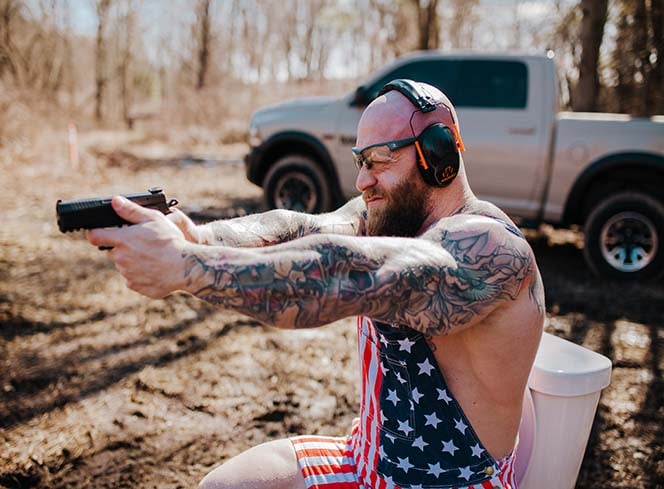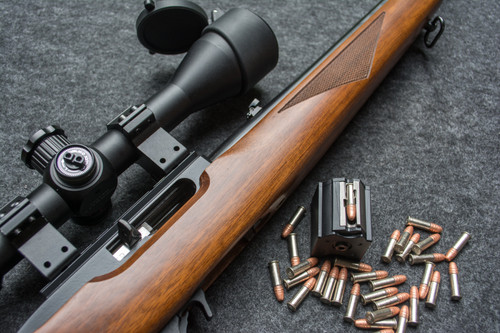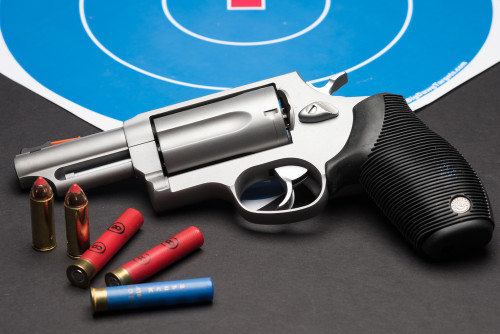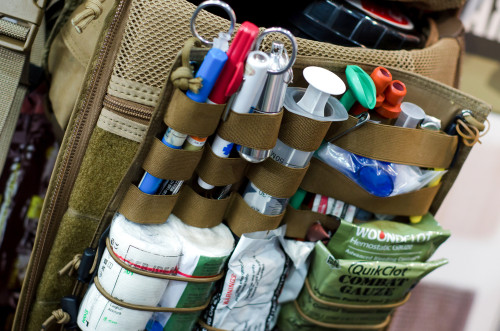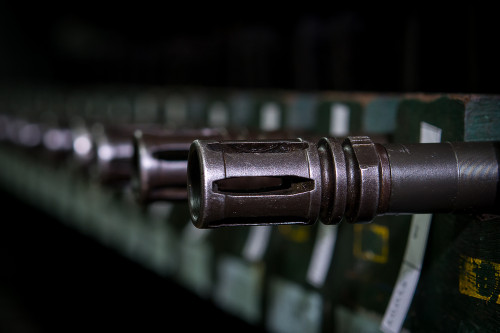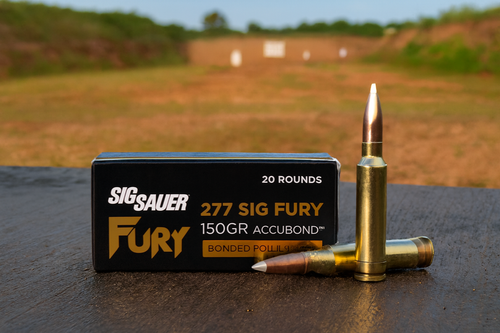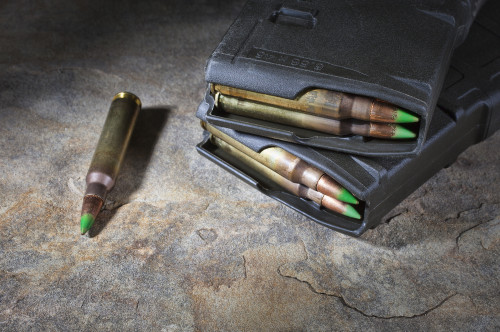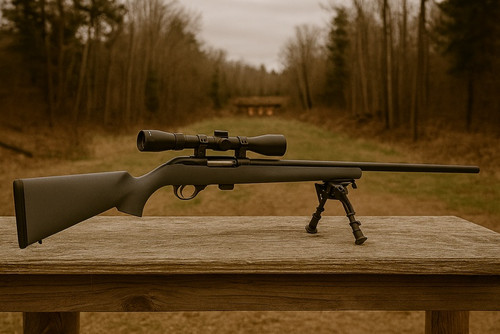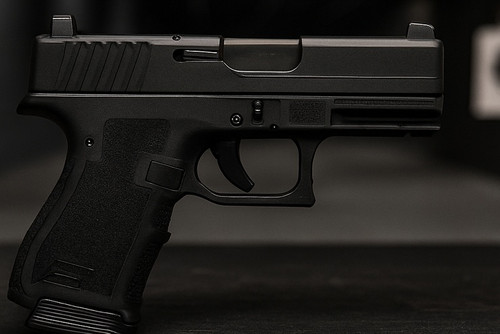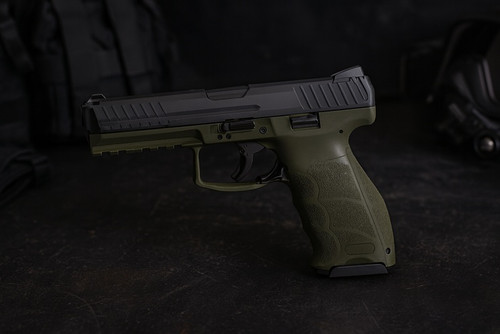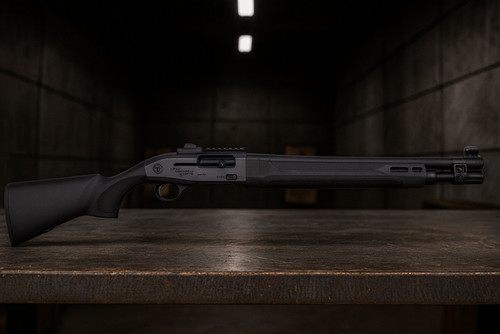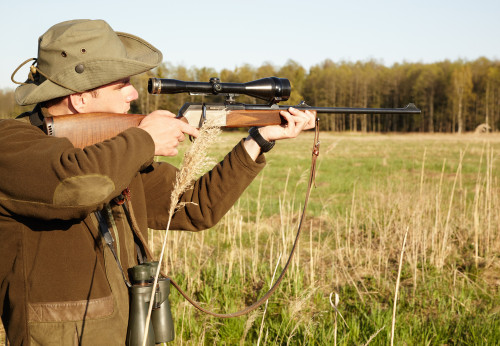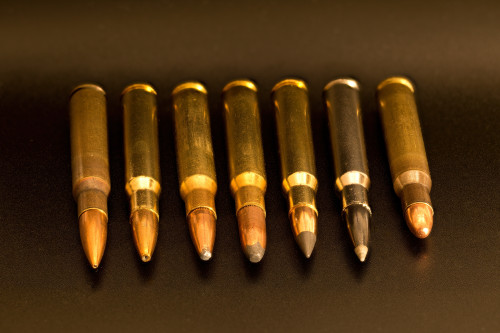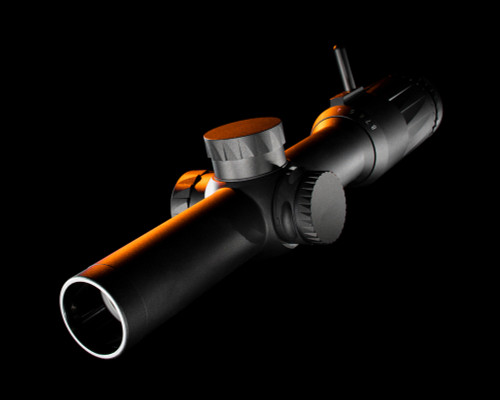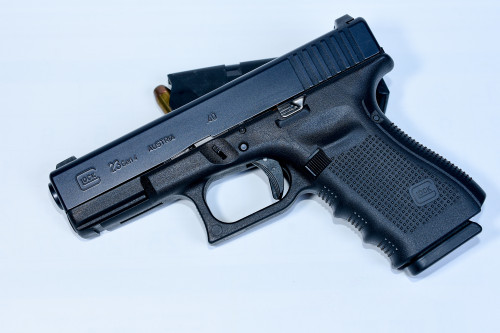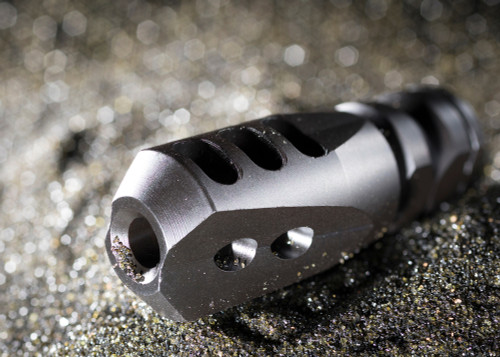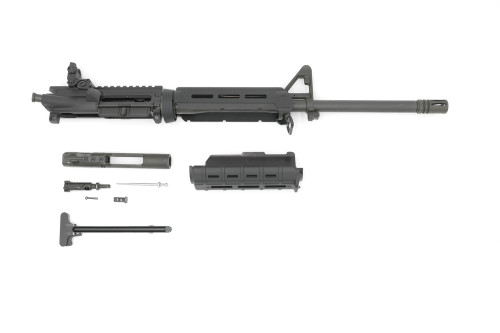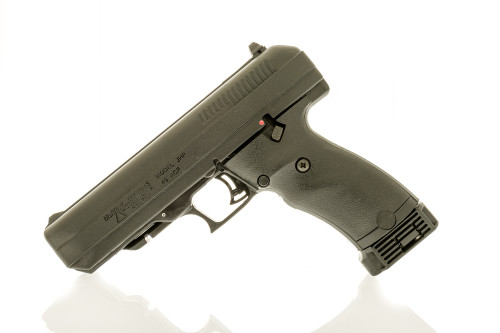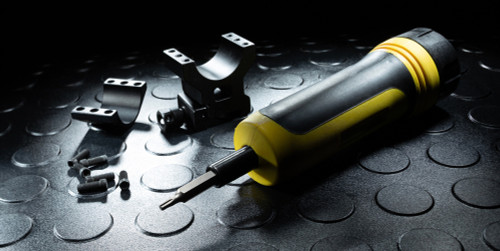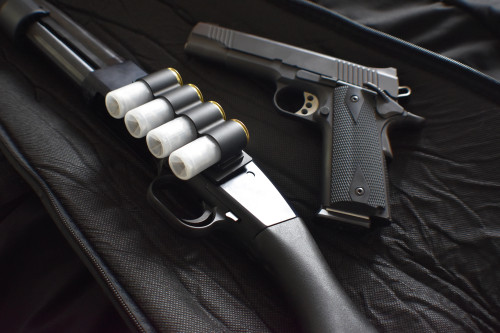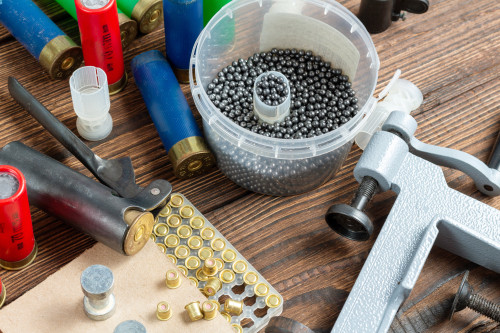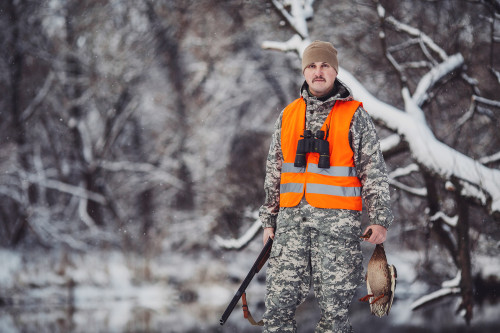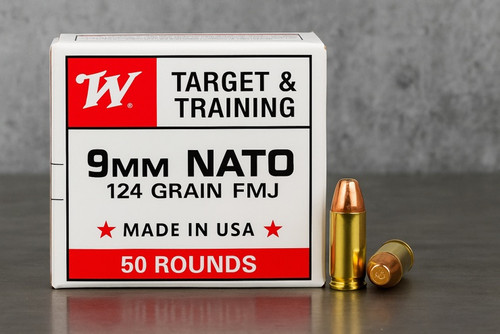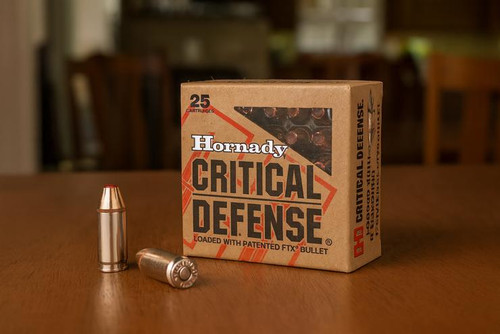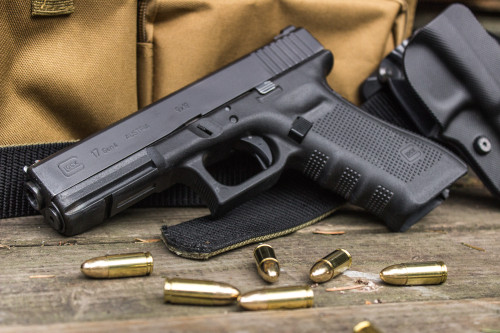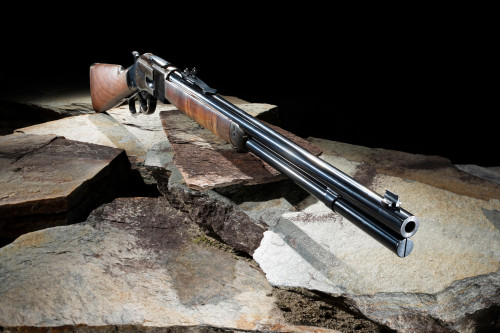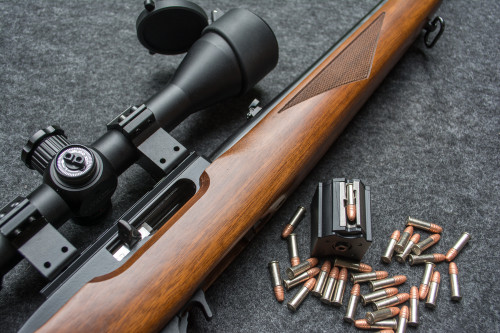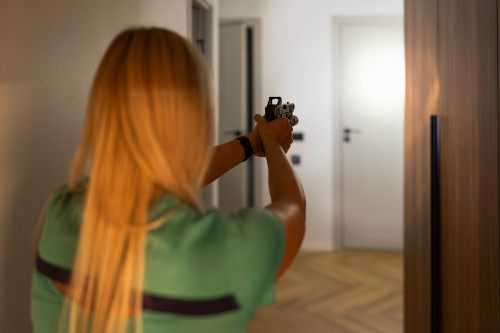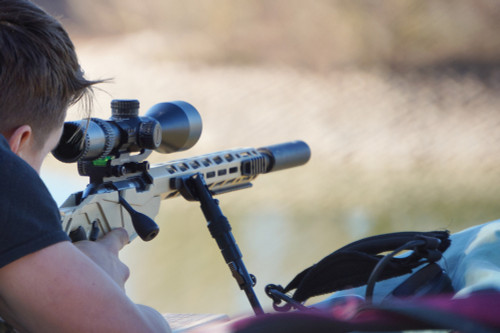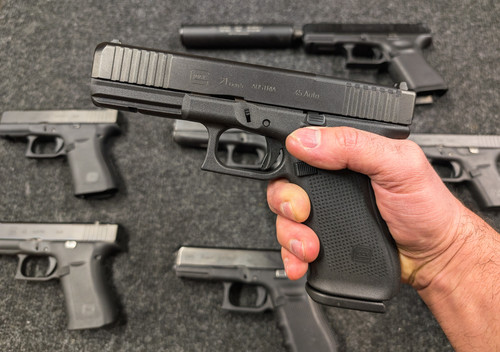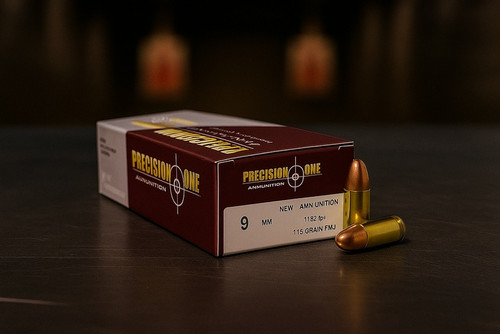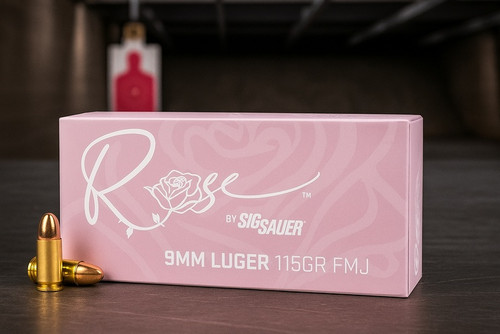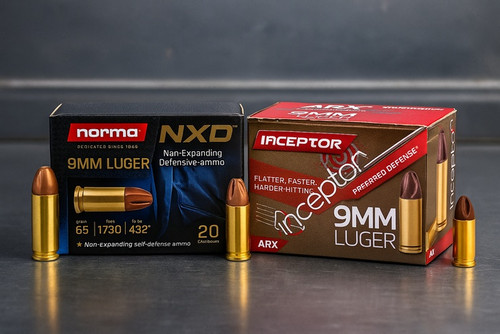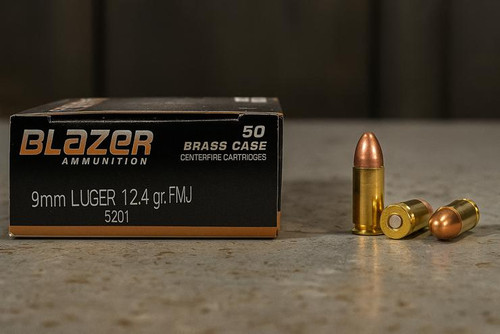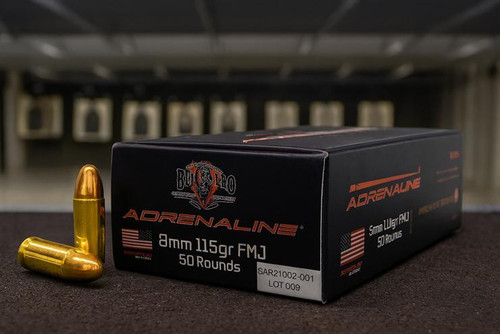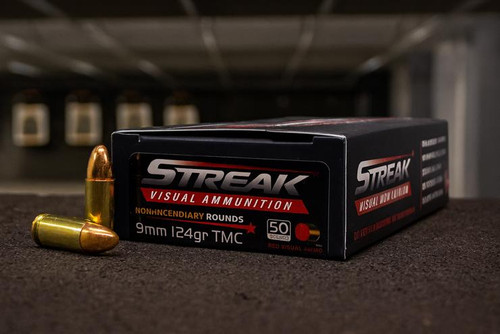The Krinkov stands as one of the most recognizable firearms in the world. With its ultra-short barrel, distinctive muzzle device, and folding stock, this compact AK variant has earned a special place in firearms history. You might have spotted it in action movies or video games, but there's much more to this little powerhouse than its eye-catching looks.
From its Soviet origins to its status as a trophy weapon in Afghanistan, the Krinkov tells a fascinating story of firearms evolution. Let's dig into what makes this compact rifle so special, how it came to be, and why people still love it decades after its creation.
Origins of the Krinkov: The AKS-74U
The gun we call "Krinkov" is actually the AKS-74U, a Soviet carbine that first appeared in 1979. After the Soviet military adopted the AK-74, they launched a competition to create a compact, lightweight carbine that would exist somewhere between a rifle and a submachine gun.
The requirements were pretty specific:
- Weight under 4.85 pounds (2.2 kilos)
- Length of 29.5 inches with stock deployed
- Length of 17.9 inches with stock folded
- Originally specified effective range of 500 meters, though in practice the AKS-74U is reliably effective out to about 200–300 meters due to its short barrel and sight radius
- Selective fire capability
Several famous Soviet firearms designers jumped into the competition. Names like Dragunov, Simonov, and of course, Kalashnikov submitted designs. Mikhail Kalashnikov took a simple approach. He basically chopped down an AKS-74 and made minimal changes to create his entry.
And guess what? Kalashnikov won. No big surprise there, since he was the golden child of Soviet firearms design. His solution also meant no need for new magazines, ammunition, or factory retooling. Smart move!
But the final product didn't quite meet all those strict requirements. The AKS-74U weighed about 6 pounds and measured 19.3 inches with the stock folded. Close enough for Soviet work, I guess!
Why It's Called a Krinkov (And Why That's Wrong)
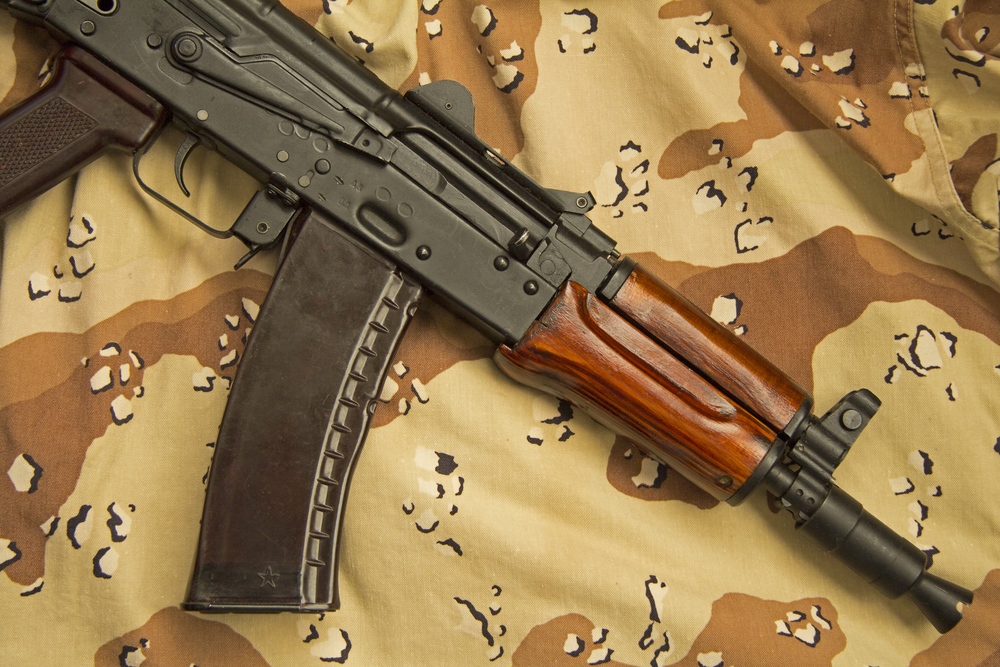
The name "Krinkov" comes from an interesting but incorrect story. Afghan fighters supposedly captured a Soviet officer named Krinkov during their conflict. They decided to name this short rifle after the captured officer. The story sounds dramatic and fits the weapon's wartime history perfectly.
Too bad it's completely false.
"Krinkov" isn't even a Russian name, though it certainly sounds Russian to Western ears. And that's exactly the point – it sounds Russian to Afghan ears too. The Afghans would add "ov" to the end of words to make them sound Russian.
The name first gained traction in the West when Soldier of Fortune magazine published an article about the weapon in 1984. From there, the name stuck in American firearms circles.
In reality, the name evolved through various Afghan languages and dialects. Some call it Krinkov, others Shrinkov, and many other variations exist. But none of them came from a captured Russian officer!
Key Features That Define a Krinkov
Let's look at what makes a Krinkov a Krinkov.
First, there's that super-short 8.1-inch barrel. This wasn't just a chopped AK barrel –it retained the standard 1:7.5-inch twist rate used in other 5.45mm AKs, contrary to the myth of a special twist for stabilization. . American gun enthusiasts learned this the hard way when they tried making DIY Krinkovs by cutting down standard AK-74 barrels, only to get terrible accuracy and keyholing projectiles.
Next, check out that distinctive muzzle device. It's not just for looks! This muzzle booster helps the short-barreled gun cycle properly by providing enough gas pressure. It also tries (with limited success) to reduce the massive muzzle flash and concussion from firing a rifle cartridge through such a short barrel.
The triangular folding stock folds to the left side of the gun. It makes it incredibly compact for storage or transport in tight spaces like vehicle compartments or helicopter cockpits.
A side-mounted scope rail allows for optics, though the gun's short sight radius makes precision shooting challenging. The reported effective range of 400 meters seems pretty optimistic given this limitation.
There is one drawback though. The Krinkov can't mount a standard bayonet or the usual grenade launchers. But Russian special forces did get a specialized silent grenade launcher for their Krinkovs.
Real-World Role: What Was the Krinkov Made For?
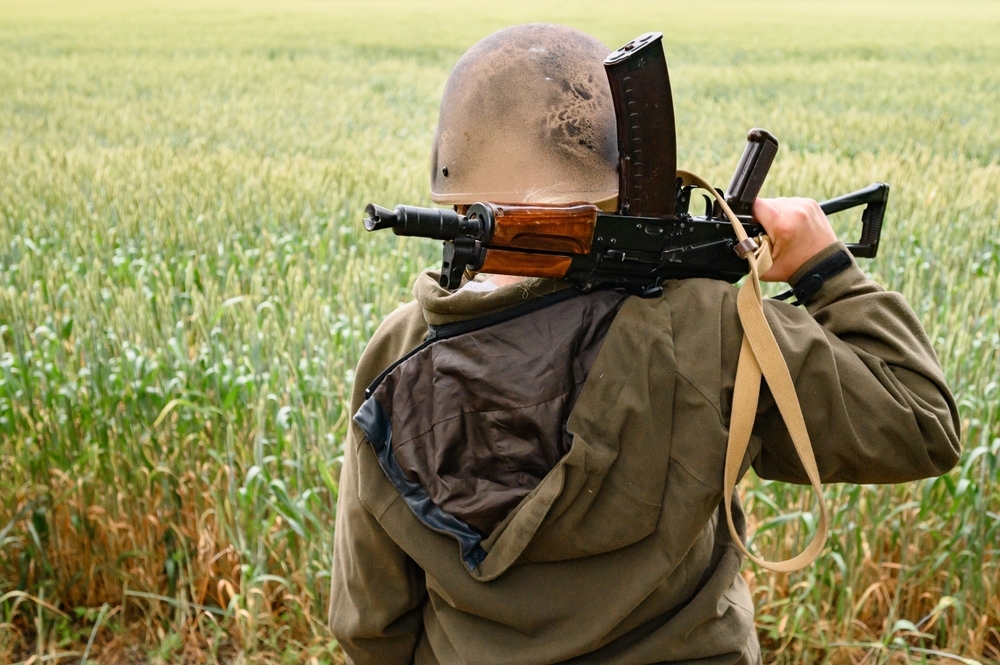
Most people believe the Krinkov was built specifically for elite special forces units. That assumption turns out to be completely wrong.
The AKS-74U served a role similar to the American M1 Carbine. It wasn't meant to be a primary infantry weapon but instead equipped support personnel who needed a compact firearm. We're talking about:
- Helicopter pilots
- Tank and vehicle crews
- Truck drivers
- RPG gunners
- Other support roles
These folks needed something more potent than a pistol but more compact than a full-sized rifle. Krinkov filled that gap perfectly.
Over time, Russian special operations forces and police units did adopt the AKS-74U, especially for close-quarters battle situations where its compact size proved helpful. But this wasn't its original purpose.
For dedicated special operations work, the Russians eventually developed the AK-105, a 5.45mm rifle with a 12.4-inch barrel that offers better ballistics and range than the ultra-short Krinkov.
The Krinkov in Pop Culture and Conflict Zones
Ever seen GoldenEye? Pierce Brosnan's James Bond carries an AKS-74U in the film. It also makes appearances in Fast & Furious 6 and countless other action movies and video games.
But the gun's cultural impact goes beyond Hollywood. In Afghanistan, the Krinkov became a status symbol and trophy weapon. To get one, fighters had to knock out a Soviet helicopter or armored vehicle and salvage it from the wreckage.
This explains why so many Afghan fighters, from Mujahideen to Taliban and even government officials, carried this weapon. It wasn't necessarily for its effectiveness but as a symbol of status and achievement.
Perhaps the most infamous Krinkov owner was Osama bin Laden, who was frequently photographed with an AKS-74U close at hand. The weapon became almost as much a part of his image as his beard and camouflage jacket.
Modern Civilian Clones and Krinkov Variants
If you want your own Krinkov, there are several options for civilian shooters in the United States and elsewhere.
Bulgarian Arsenal SLR-106 Series
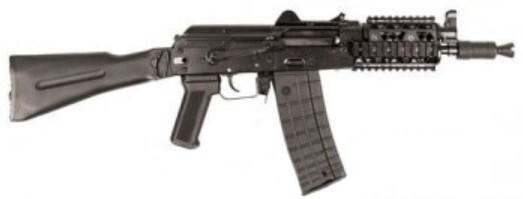
The Arsenal SLR-106 series rifles represent some of the finest Krinkov clones available in America. Built from Bulgarian parts, these guns feature excellent craftsmanship and attention to detail.
If you're looking to start your Krinkov journey, these rifles make a great entry point, though they come with a premium price tag of around $1,649.
Zastava M92
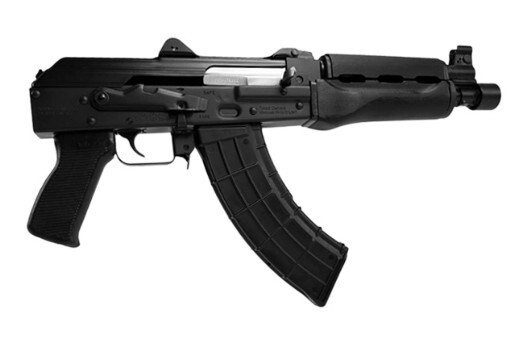
The Serbians put their own spin on the Krinkov concept with the M92. This variant chambers the classic 7.62×39mm round instead of the 5.45×39mm found in the original AKS-74U.
Other differences include an under-folding stock (rather than side-folding), a longer 10.0-inch barrel compared to the Krinkov’s 8.1 inches, and its own version of the muzzle booster. . The Zastava Arms ZPAP92 sells for around $899. It is a more budget-friendly option for Krinkov enthusiasts.
Zastava M85
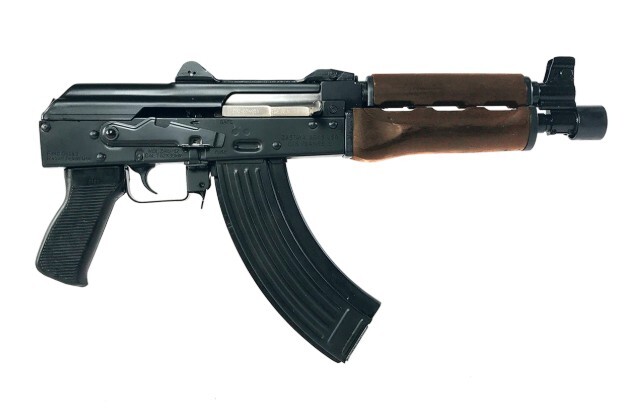
The Zastava M85 offers shooters a 5.56mm option in the popular AK-style platform. The Zastava M85 takes the M92 platform and rechambers it for NATO's standard rifle cartridge. These guns have gained popularity as AK-style pistols in the U.S. market and sell for approximately $968.
Both Zastava models feature the heavier RPK receiver and they are quite sturdy and durable firearms. They may not be exact Krinkov clones, but they capture much of the same compact, hard-hitting spirit.
How the Krinkov Compares to Full-Size Rifles
Back when the Krinkov was designed, AK series rifles were already considered fairly compact compared to contemporaries like the FN FAL, G3, M14, and even the M16.
So why make an even shorter AK? The answer lies in the specific needs of support personnel and the tight confines of vehicles and aircraft.
The standard AK-74 measures about 37 inches with its stock extended, compared to the Krinkov's 29.5 inches. With stocks folded, the difference becomes even more dramatic. The Krinkov at 19.3 inches simply disappears into tight spaces where a standard rifle would be cumbersome.
But this compactness comes at a cost. The effective range drops from the AK-74's 625+ meters to a more modest 400 meters for the Krinkov. And that 400-meter figure seems generous given the short sight radius and barrel length.
The muzzle velocity also decreases from around 2,900 FPS in the standard AK-74 to approximately 2,400 FPS in the Krinkov. It's still quite lethal at closer distances, but with noticeably reduced range and energy.
Tactical Performance and Ballistics
Despite its tiny size, the Krinkov packs a punch. The 5.45×39mm cartridge performs surprisingly well from the short 8.1-inch barrel, reaching velocities of around 2,400 FPS.
Legend has it that one design goal was for the Krinkov to achieve similar velocities to a standard AK-47, which seems plausible given the numbers.
But getting good performance from such a short barrel required some engineering tweaks. The special twist rate prevents bullets from tumbling or keyholing, a problem that plagued early DIY attempts at creating Krinkov clones.
The muzzle booster serves double duty. It helps the action cycle properly and tames some of the impressive fireballs that would otherwise erupt from the barrel. Even with this device, the Krinkov delivers substantial muzzle blast and concussion, making it a loud little gun!
For close-quarters work, these drawbacks matter less, and the Krinkov's compact size and quick handling make up for the ballistic compromises.
Why the Krinkov Remains Popular Today
The Krinkov never became the main infantry weapon for any major military force. It exists in that weird space between a rifle and a submachine gun, filling a specialized niche but not excelling as a primary combat arm.
So why does it remain so popular decades after its introduction?
For collectors, the Krinkov represents a fascinating piece of Cold War history. Its association with the Soviet-Afghan War gives it historical significance beyond most firearms of its era.
Gun enthusiasts appreciate its unique design features – that distinctive muzzle booster, the ultra-short barrel, and the folding stock create an instantly recognizable silhouette unlike any other firearm.
Modern Krinkov variants offer a compact package with rifle-caliber power – something increasingly popular in today's tactical world where maneuverability often trumps maximum range.
The Krinkov just looks cool. From James Bond to Osama bin Laden, who was often seen with a short-barreled AK variant resembling the AKS-74U (though some sources suggest it may have been an AKMSU chambered in 7.62x39mm), this little gun has an undeniable presence that transcends its modest origins as a weapon for helicopter pilots and truck drivers.
Conclusion
The Krinkov stands as one of the most distinctive firearms ever created. From its origins as the AKS-74U in late 1970s Soviet Russia to its status as a coveted trophy in Afghanistan and its appearances in action movies worldwide, this compact carbine has carved out a unique place in firearms history.
It may not be the most practical rifle by today's standards. Modern designs like the AK-105 offer better ballistics with similar compactness. But the Krinkov's unique blend of features – that distinctive muzzle booster, ultra-short barrel, and folding stock – create an instantly recognizable profile that continues to capture the imagination of gun enthusiasts worldwide.
Like the M1 Carbine before it, the Krinkov occupies that rare middle ground between rifle and submachine gun – not quite either, but offering advantages of both. This unusual position in firearms evolution ensures the Krinkov will remain a subject of fascination for decades to come.
Looking for ammo for your AK platform? Look at what we offer in both 5.45x39mm and 7.62x39mm!
FAQs
1. Is a Krinkov the same as an AK-47?
No. The Krinkov (AKS-74U) is a compact version of the AK-74, not the AK-47. It fires the smaller 5.45×39mm cartridge rather than the 7.62×39mm round used in the AK-47. It also features a much shorter barrel, folding stock, and special muzzle device not found on standard AK rifles.
2. Can civilians legally own a Krinkov in the United States?
Yes, but with caveats. True Soviet AKS-74Us are extremely rare and expensive in the U.S. Most American gun owners opt for semi-automatic clones like the Arsenal SLR-106 series or Zastava ZPAP92. AK-style pistols like the ZPAP92 are legal without a tax stamp as long as no stock is attached. If you want to add a stock to a barrel shorter than 16 inches, you must complete ATF paperwork and pay a $200 tax stamp, as it’s then classified as a Short-Barreled Rifle (SBR) under U.S. law.
3. What makes the Krinkov's muzzle device special?
The Krinkov's distinctive muzzle device is a booster that serves multiple purposes. It helps ensure reliable cycling by redirecting gas pressure, reduces (though doesn't eliminate) the substantial muzzle flash from the short barrel, and helps manage recoil. Without this device, the short-barreled gun would likely suffer from functioning issues.
4. Why did Afghan fighters value the Krinkov so highly?
Afghan fighters prized the Krinkov as a status symbol because it was difficult to obtain. Typically, one had to knock out a Soviet helicopter or armored vehicle and retrieve it from the wreckage. Carrying a Krinkov demonstrated a fighter's accomplishments in battle against Soviet forces.
5. How effective is the Krinkov in actual combat?
The Krinkov offers a good compromise for specific situations. Its compact size makes it excellent for use in tight spaces like vehicle interiors or buildings. It delivers more power than a pistol or submachine gun, but its short barrel limits effective range to about 400 meters (and practically speaking, much less). It's best suited for close to medium-range engagements rather than long-distance firefights.
6. What's the difference between a true Krinkov and guns like the Zastava M92?
A true Krinkov (AKS-74U) fires 5.45×39mm ammunition, has an 8.1-inch barrel with a 1:6.3 twist rate, features a side-folding triangular stock, and includes the specific Soviet-designed muzzle booster. Guns like the Zastava M92 are similar in concept but differ in key details – the M92 fires 7.62×39mm ammunition, has a slightly longer barrel, uses an under-folding stock, and features different furniture and muzzle devices.




 Pro Armory Editorial Team
Pro Armory Editorial Team